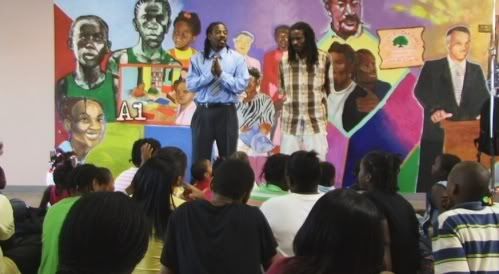
Pulling off a Tennessee Williams play about southern social mores in the 1950s wasn’t easy in the 1950s, but doing it in 2011, on the 56th anniversary of the play’s first production, is quite a feat.
Jamie Cunningham is most ambitious in trying to portray a culture not his own with its intricate balance of family power, sexuality and avarice in the mid-twentieth century South. His directing skills are evident in his advice to Francesca Vavala who played the toughest role of Margaret. She keeps up her southern accent and quiet tones in character – through the lion’s share of the first act while her husband, Brick – played with practiced aloofness by Jim Burns - sips his liquor and tried to numb himself to her banter and pleas.
Big Daddy (Raymond Harrington) and Big Mamma (Judith A. David – whom you would recognize in her street clothes as the perennial Chapel Street volunteer) are brash and bigger than life as patriarch and matriarch ruling over the huge plantation and their children.
And a delightful discovery for me was the perfect southern gentleman that Andrew Mitchell conjured up as Gooper, the older son of the family. He was cool, calm and conniving -- quietly leading his wife and brood of no-neck monsters --ably played by five children -- of whom Steve Ashby (Buster) did a great job with what Tennessee Williams had written as Dixie’s lines in the play.
By the way, Mitchell’s direction of Zoo Story is the winner of the ESTA competition and will be going to national competition.
Shows April 22 – May 7, 2011.
See www.chapelstreetplayers.org.





























